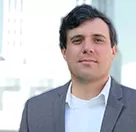James Brasuell, AICP is the former editorial director of Planetizen and is now a senior public affairs specialist at the Southern California Association of Governments. James managed all editorial content and direction for Planetizen from 2014 to 2023, and was promoted from manging editor to editorial director in 2021. After a first career as a class five white water river guide in Trinity County in Northern California, James started his career in Los Angeles as a volunteer at a risk reduction center in Skid Row. Prior to joining Planetizen, James worked at the Cal Poly Pomona College of Environmental Design, as an editor at Curbed LA, as editor of The Planning Report, and as a freelance contributor for The Architect’s Newspaper, the Urban Land Institute – Los Angeles Chapter, FORM, KCET, and the California Planning & Development Report.
Ranking the Best and Worst Cities to Live and Work with Special Needs
WalletHub recently released the "2014 Best & Worst Cities for People with Disabilities" to highlight the economic power of providing employment opportunities and livable communities for people with special needs.

The Koch Brothers vs Transit
Two of the more famous examples of the economic interests of the fossil fuel industry, Charles and David Koch, are battling transit projects, by any means necessary, all over the country.
National Institute for Transportation and Communities Releases Complete Streets Design Guide
Principal investigator Marc Schlossberg and co-investigator John Rowell, of the University of Oregon, have complete a guide to help communities of all varieties realize the benefits of complete streets.
New York City Moving Forward with Inclusionary Zoning Study
The New York City Housing Development Corporation hired BAE Urban Economics, also known as Bay Area Economics, "to crunch the numbers on its forthcoming mandatory inclusionary housing program," according to an article by Joe Anuta.

Traffic Safety Silver Bullet: Prohibit the 12-Foot Traffic Lane
Jeff Speck, author of Walkable City, argues that reducing the width of traffic lanes would be a panacea for the disastrous public health outcomes of traffic safety.

























